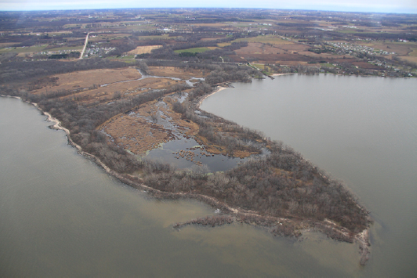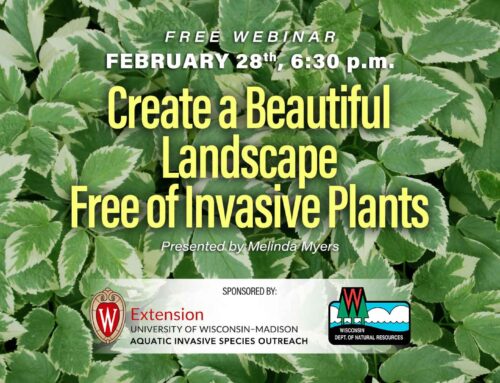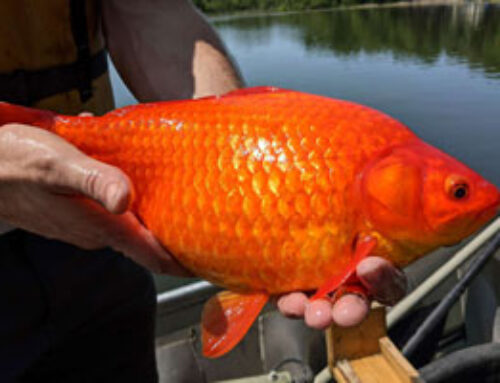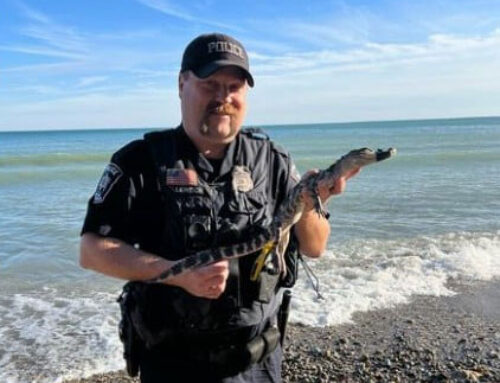Staff at the Fish and Wildlife Service are excited to announce funding to increase wetland protections within the Wequiock Creek watershed, a popular birding site in northeastern Wisconsin. This land acquisition will preserve an important intact floodplain wetland and Wequiock Creek, a naturally meandering stream that enters Green Bay at the Point Au Sable Nature Preserve. Additionally, agricultural fields on the parcel will eventually be restored to native oak savanna, creating enhanced recreational opportunities and supporting wildlife species like the rusty-patched bumble bee and red-headed woodpecker.
“While the property provides critical coastal and riparian wetland ecological benefits, it is also extremely important for providing public access and recreational opportunities in an area that is developing rapidly and losing greenspace,” said Julie Hawkins Tyriver, Land Conservation Director for the Northeast Wisconsin Land Trust. “Not only is the area important to residents today, it has high cultural significance to multiple Native American tribes and is reported to be very near the location where French Explorer Jean Nicolet landed.”
The Wisconsin Department of Natural Resources, in partnership with the Northeast Wisconsin Land Trust and the University of Wisconsin-Green Bay, was recently awarded $450,000 from the Service for this project to acquire 74 acres of land in the Wequiock Creek watershed and to restore 25 acres of emergent wetlands on the adjacent Point au Sable Nature Preserve in Brown County, Wisconsin. Additional funding sources include $375,000 in natural resource damage assessment settlement funds to support the acquisition provided by the Fox River Trustees, $150,000 provided by the Wisconsin Department of Natural Resource’s Knowles-Nelson Stewardship Program, and $6,000 from other contributing funders. Pending approval by University of Wisconsin – Green Bay, the acquired land will expand the Point au Sable Nature Preserve by 40%, supporting additional education and research opportunities for local schools and the university.

A red-headed woodpecker pauses from foraging on a tree. Photo by Debbie Koenigs/USFWS.
The Point au Sable wetlands are the largest coastal wetlands on the entire east shore of Green Bay and contains one of lower Green Bay’s last remnant sedge meadows. The area is a magnet for migratory birds, attracting more than 220 species, including vulnerable species like the eastern whip-poor-will, rusty blackbird, and golden-winged warbler. This well-known destination for birdwatchers is also habitat for a highly productive fish community, amphibians, bats, mammals and invertebrates. The Wequiock Creek acquisition will allow access for recreation opportunities such as wildlife watching, hiking, hunting, as well as creek access for fishing.
Wetlands in coastal watersheds are diverse and complex ecosystems that are vital to the nation’s economy and an important part of the nation’s natural heritage. In 2019, more than $20 million was awarded to 22 projects in 11 coastal states to protect, restore or enhance more than 7,000 acres of coastal wetlands and adjacent upland habitats through the U.S. Fish and Wildlife Service’s National Coastal Wetlands Conservation Grant Program. The program, funded in part through taxes paid on equipment and fuel purchases by recreational anglers and boaters, creates significant benefits for the American public. The billions of dollars generated through recreational angling, boating, waterfowl hunting and birdwatching benefit communities across the country.
Article written by:
Betsy Galbraith
US Fish and Wildlife Service
Green Bay Field Office
(920) 866-1753






